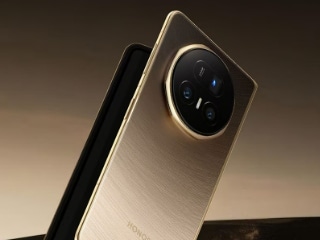- Home
- Science
- Science News
- Chandrayaan 2 Detects Solar Proton Events Which Increase Radiation Exposure to Humans in Space: ISRO
Chandrayaan-2 Detects Solar Proton Events Which Increase Radiation Exposure to Humans in Space: ISRO
Such multi-point observations help us understand the propagation and its impact on different planetary systems," ISRO said.

Photo Credit: YouTube/ ISRO
The SPE event was seen by NASA's Geostationary Operational Environmental Satellite (GOES) satellite
A Large Area Soft X-ray Spectrometer (CLASS), a payload on-board Chandrayaan-2 Orbiter, has detected solar proton events which significantly increase the radiation exposure to humans in space, the Indian Space Research Organisation (ISRO) has said.
The instrument on January 18 also recorded coronal mass ejections (CMEs), a powerful stream of ionised material and magnetic fields, which reach the Earth a few days later, leading to geomagnetic storms and lighting up the polar sky with auroras, the ISRO said on Wednesday.
"Such multi-point observations help us understand the propagation and its impact on different planetary systems," it said.
When the sun is active, spectacular eruptions called solar flares occur that sometimes also spew out energetic particles (called solar proton events or SPEs) into interplanetary space.
Most of these are high-energy protons that impact space systems and significantly increase radiation exposure to humans in space. They can cause ionisation on large scales in the earth's middle atmosphere, the space agency said.
Many intense solar flares are accompanied by CMEs, a powerful stream of ionised material and magnetic fields, which reach the earth a few days later, leading to geomagnetic storms and lighting up the polar sky with auroras.
Solar flares are classified according to their strength. The smallest ones are A-class, followed by B, C, M, and X. Each letter represents a 10-fold increase in energy output. This means that an M-class flare is 10 times more intense than C-class flare and 100 times intense than B-class flare, the ISRO said.
Within each letter class, there is a finer scale from 1 to 9 — a M2 flare is twice the strength of M1 flare.
“Recently, there were two M-class solar flares. One flare (M5.5) spewed out energetic particles into interplanetary space and the other flare (M1.5) was accompanied by a CME,” the space agency said.
The SPE event was seen by NASA's Geostationary Operational Environmental Satellite (GOES) orbiting around the Earth. However, the CME event was not detected by GOES.
“Chandrayaan-2 Large Area Soft X-ray Spectrometer (CLASS) on-board Chandrayaan-2 Orbiter detected SPE due to an M5.5 class solar flare that occurred on January 20, 2022,” the ISRO said.
“The CLASS instrument also detected a CME event as it passed through the moon due to an M1.5 class solar flare that occurred on January 18,” it added.
The CME travels at a speed of about 1,000 km/s and it takes about two to three days to reach the Earth.
“The signature of this event is missed by the GOES satellite, as the earth's magnetic field provides shielding from such events. However, the event was recorded by Chandrayaan-2,” the ISRO said.
“The CLASS payload on Chandrayaan-2 saw both the SPE and CME events pass by from two intense flares on the Sun,” it added.
Planned to land on the moon's south pole, Chandrayaan-2 was launched on July 22, 2019. However, the lander Vikram hard-landed on September 7, 2019, crashing India's dream to become the first nation to successfully land on the lunar surface in its maiden attempt. The ISRO had then said the mission achieved 98 percent success as the orbiter continues to share data with the ground station.
Get your daily dose of tech news, reviews, and insights, in under 80 characters on Gadgets 360 Turbo. Connect with fellow tech lovers on our Forum. Follow us on X, Facebook, WhatsApp, Threads and Google News for instant updates. Catch all the action on our YouTube channel.
Related Stories
- Samsung Galaxy Unpacked 2025
- ChatGPT
- Redmi Note 14 Pro+
- iPhone 16
- Apple Vision Pro
- Oneplus 12
- OnePlus Nord CE 3 Lite 5G
- iPhone 13
- Xiaomi 14 Pro
- Oppo Find N3
- Tecno Spark Go (2023)
- Realme V30
- Best Phones Under 25000
- Samsung Galaxy S24 Series
- Cryptocurrency
- iQoo 12
- Samsung Galaxy S24 Ultra
- Giottus
- Samsung Galaxy Z Flip 5
- Apple 'Scary Fast'
- Housefull 5
- GoPro Hero 12 Black Review
- Invincible Season 2
- JioGlass
- HD Ready TV
- Laptop Under 50000
- Smartwatch Under 10000
- Latest Mobile Phones
- Compare Phones
- OnePlus 15R
- Realme Narzo 90x 5G
- Realme Narzo 90 5G
- Vivo S50 Pro Mini
- Vivo S50
- OPPO Reno 15c
- Redmi Note 15 5G
- Redmi Note 15 Pro 5G
- Asus ProArt P16
- MacBook Pro 14-inch (M5, 2025)
- Infinix Xpad Edge
- OnePlus Pad Go 2
- OnePlus Watch Lite
- Just Corseca Skywatch Pro
- Acerpure Nitro Z Series 100-inch QLED TV
- Samsung 43 Inch LED Ultra HD (4K) Smart TV (UA43UE81AFULXL)
- Asus ROG Ally
- Nintendo Switch Lite
- Haier 1.6 Ton 5 Star Inverter Split AC (HSU19G-MZAID5BN-INV)
- Haier 1.6 Ton 5 Star Inverter Split AC (HSU19G-MZAIM5BN-INV)

















